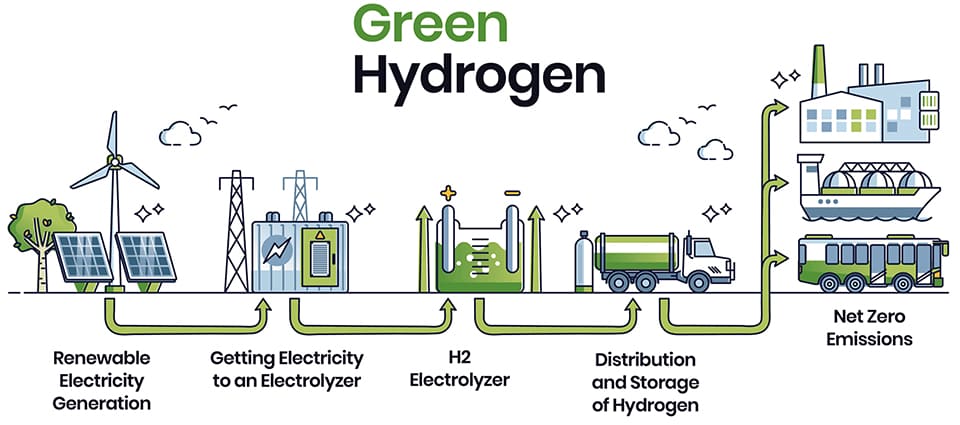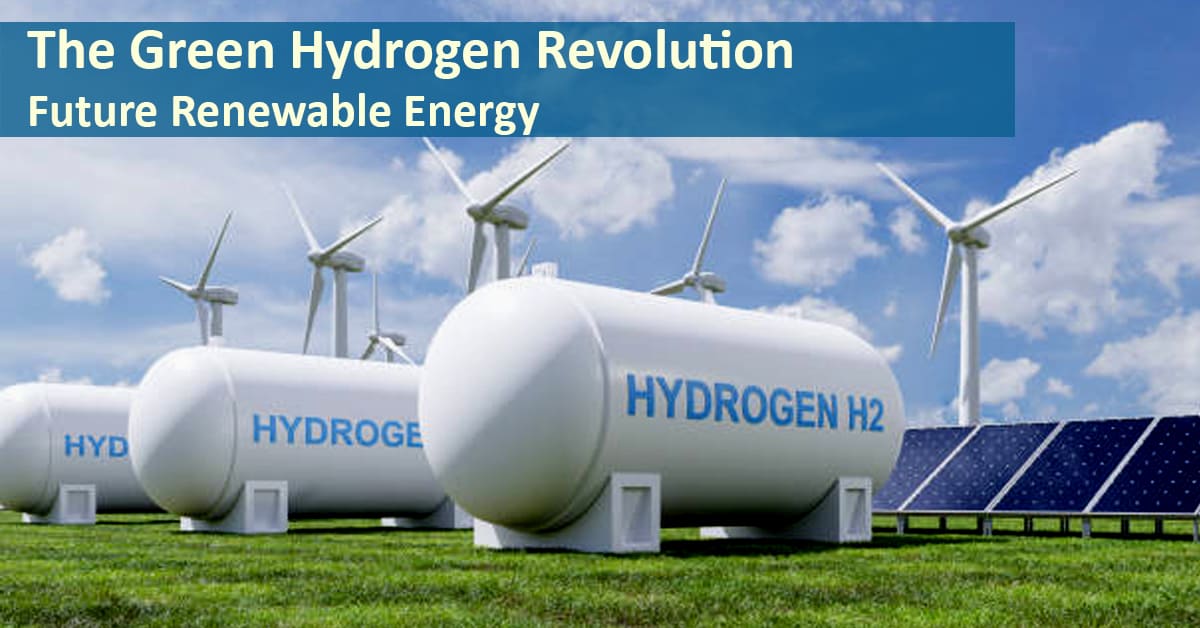With climate change becoming a bigger issue, the world is looking for cleaner energy sources. One promising solution is green hydrogen. This amazing fuel can help reduce pollution and create a more sustainable future. But what is green hydrogen, how can it be used, and How we forwarding on this Renewable energy? Let’s explore.
What is Green Hydrogen?
Green Hydrogen(GH2) is made using renewable energy sources like wind, solar, or hydro power. The process involves splitting water (H₂O) into hydrogen (H₂) and oxygen (O₂) using electricity. Since the electricity comes from renewable sources, green hydrogen is a zero-emission fuel from start to finish.
How Green Hydrogen Can Be Used
Green hydrogen has many uses across different industries:
- Storing Energy: It can store extra renewable energy generated when demand is low. This stored hydrogen can then be turned back into electricity when demand is high, helping to keep the power supply stable.
- Transportation: Hydrogen fuel cells can power vehicles like buses, trucks, and even ships. These vehicles only produce water vapor, making them a clean alternative to traditional engines.
- Industrial Uses: Industries like steel, cement, and chemicals are big polluters. Green hydrogen can replace fossil fuels in these industries, reducing their carbon footprint.
- Heating and Power: It can provide heat and electricity for homes and businesses. Combined heat and power (CHP) systems using hydrogen are efficient and can be used locally.
- Making Ammonia: Ammonia is used in fertilizers, but its production currently causes a lot of CO₂ emissions. Green hydrogen can be used to make ammonia in a cleaner way.
India’s Role in the Green Hydrogen Revolution
India has great potential to become a leader in green hydrogen. Here are some key points about India’s efforts:
- National Hydrogen Mission: Launched in 2021, this mission aims to make India a hub for green hydrogen. The goal is to produce 5 million tons of green hydrogen every year by 2030.
- Renewable Energy: India plans to reach 175 GW of renewable energy by 2022 and 450 GW by 2030. This renewable energy can be used to produce green hydrogen.
- Partnerships: India is working with countries like Japan, Germany, and Australia to develop green hydrogen technologies. These partnerships help with knowledge exchange, technology transfer, and investment.
- Industry Initiatives: Indian companies are also investing in green hydrogen. For example, Indian Oil Corporation is building a green hydrogen plant, and Reliance Industries is planning to invest in green hydrogen projects.
- Research and Development: Indian institutions like IIT and CSIR are researching ways to make green hydrogen production more efficient and cheaper.
National Green Hydrogen Mission: Powering a Sustainable Future!
— Ministry of New and Renewable Energy (MNRE) (@mnreindia) January 10, 2025
Launched on January 4, 2023, by PM Shri Narendra Modi, the National Green Hydrogen Mission aims to make India a global hub for green hydrogen production and export.
With ₹19,744 crore allocated until FY 2029-30,… pic.twitter.com/LOUglXiEyS
Also Read: Solar Rooftop Subsidy Scheme: Know Everything
Leading Companies on Green Hydrogen
Several global companies are making big development in green hydrogen. Some of the front-runners are :
- Hydrogenics (Canada): Specializes in hydrogen production and fuel cell technology.
- Plug Power (USA): Develops hydrogen fuel cell systems for various applications.
- NEL Hydrogen (Norway): Focuses on green hydrogen production and storage solutions.
- Linde (Germany): A global leader in industrial gases, investing heavily in hydrogen technologies.
In India, companies like Indian Oil Corporation (IOC), Reliance Industries, and Tata Motors are actively working on green hydrogen projects.
Countries Leading on Green Hydrogen
Several countries are investing heavily in green hydrogen:
- Germany: Aims to be a global leader in hydrogen technology and has committed billions of euros to the sector.
- Japan: Plans to use hydrogen as a major energy source, especially for the Tokyo 2020 Olympics.
- Australia: Has abundant renewable energy resources and is focused on becoming a leading hydrogen exporter.
- South Korea: Investing in hydrogen infrastructure and fuel cell technology for transportation.
Also Read: China’s CO2 Emissions Set to Decline in 2024 After Record Growth in Renewable Energy
Challenges about Green Hydrogen
While green hydrogen has a lot of potential, there are some challenges to overcome:
- High Costs: Producing green hydrogen is currently expensive. Lowering costs through economies of scale and technology improvements is crucial.
- Infrastructure: Developing infrastructure for production, storage, and distribution is essential. This includes building electrolyzers and refueling stations.
- Policy Support: Governments need to create supportive policies and regulations to encourage the growth of the green hydrogen sector.
- Public Awareness: Educating the public about the benefits of green hydrogen and addressing safety concerns is important.

Conclusion
Also Read : How to Know the Real Price of Gold
Green hydrogen holds great commitment for a cleaner, more sustainable future. India, with its vast renewable energy resources, is well-placed to be a key player in this global energy revolution.
By investing in research, building partnerships, and developing infrastructure, India can lead the green hydrogen revolution. The opportunities are so much , and with the right efforts, green hydrogen can become a important part of India’s energy sector.
